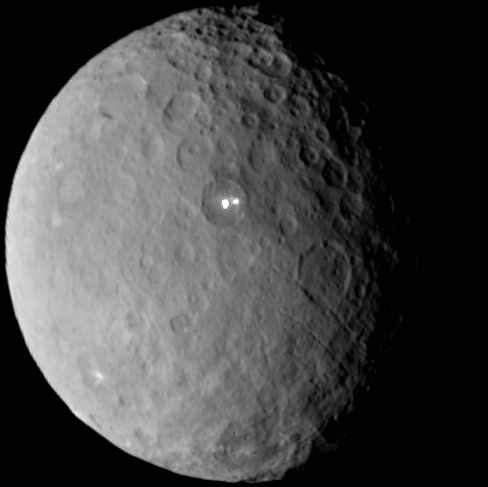A NASA spacecraft is about to reach the end of a nearly eight-year journey and make the first rendezvous with a dwarf planet.
The Dawn craft will slip into orbit Friday around Ceres, a dwarf planet the size of Texas. Unlike robotic landings or other orbit captures, the arrival won't be a nail-biter. Still, Dawn had to travel some 3 billion miles to reach the largest object in the asteroid belt between Mars and Jupiter.
"It's been a roller coaster ride. It's been extremely thrilling," project manager Robert Mase of the NASA Jet Propulsion Laboratory said Monday.

Ceres is the first of two dwarf planets to receive visitors this year. NASA's New Horizons spacecraft is barreling toward Pluto, where it will arrive in July.
Launched in 2007, Dawn made the first stop of its journey at the asteroid Vesta. It beamed back more than 30,000 images of the rocky world inside the asteroid belt before heading to its final destination.
As Dawn approached Ceres, it snapped pictures of the dwarf planet, revealing two mysterious bright spots inside a crater. Scientists will have to wait until the craft spirals closer to the surface in the coming months to get sharper images. It will get as close as 235 miles above Ceres' surface, or roughly the distance of the International Space Station above Earth.
Last year, European researchers not connected with the mission detected water plumes spewing from two regions on Ceres. The source of the plumes remains unclear.
Deputy project scientist Carol Raymond said the shiny spots — possibly exposed ice or salt — were a surprise and could be related to the plumes.
Dawn carries an instrument that should be able to detect the plumes if the surface is still active, Raymond said.
The $473 million Dawn mission is the first to target two different celestial objects to better understand how the solar system evolved. It's powered by ion propulsion engines, which provide gentle yet constant acceleration.
Vesta and Ceres reside in a zone between Mars and Jupiter that's littered with space rocks that never grew to be full-fledged planets.
Dawn entered orbit around Vesta in 2011 and spent a year photographing the lumpy surface and taking measurements of the second massive object in the asteroid belt from different altitudes.
Unlike rocky Vesta, Ceres is thought to possess a large amount of ice and some scientists think there may have been an ocean lurking below the surface.
The pair are "literally fossils that we can investigate to really understand the processes that were going on" during the formation of the solar system, Raymond said.
The Associated Press
Probe's measurements show water composition of comet is too unlike Earth's oceans to have brought H20 to the planet
New Horizons craft will transmit images of Pluto and its moons while exploring Kuiper Belt full of dwarf planets
The Kepler mission finds planets that are the ideal distance from stars to have liquid water, the potential to host life
Error
Sorry, your comment was not saved due to a technical problem. Please try again later or using a different browser.